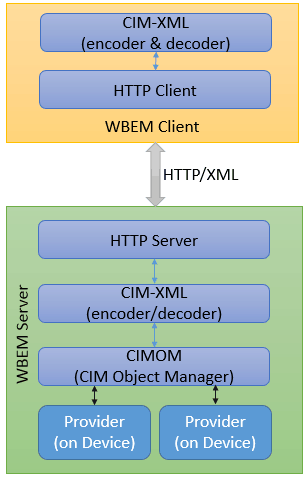Definition of Web-Based Enterprise Management (WBEM) in Network Encyclopedia.
What is WBEM (Web-Based Enterprise Management)?
Web-Based Enterprise Management, or WBEM, is a proposed set of standards that enable computers and other network devices to be managed using a standard Web browser such as Microsoft Internet Explorer. Web-Based Enterprise Management (WBEM) is an initiative of the Distributed Management Task Force (DMTF) and originated in 1996 as a joint initiative of companies headed by Microsoft, Intel, Cisco Systems, Compaq, and BMC Software.

How Web-Based Enterprise Management Works
WBEM enables information such as the amount of RAM in a computer, the capacity of a hard disk, the type of process, and the version of the operating system or firmware to be extracted from computers, routers, switches, and other network devices. This information can be used for detection of potential problems before they occur, for remote management using products such as Microsoft Systems Management Server (SMS), and for planning and other decision-making purposes. WBEM is designed to work in heterogeneous enterprise networking environments to collect diagnostic and management data relating to hardware from multiple vendors, different operating systems, different network protocols, and distributed applications.
Currently, enterprise-level network management includes using Simple Network Management Protocol (SNMP) for managing routers and switches, Desktop Management Interface (DMI)for desktop systems management, proprietary management protocols and systems for managing vendor applications, and so on. WBEM simplifies management by providing a common model and data source that can be extended to function with existing protocols, networking components, and applications.
The framework for this standard is the Common Information Model (CIM), a set of schema for cross-platform network management also developed by the DMTF. Once information is collected, it can be shared across an enterprise and displayed using WBEM management systems.
Microsoft has built the WBEM architecture into Windows 98 and Windows 2000 and has made it available as an add-on for Windows NT 4. Windows Management Instrumentation (WMI) is Microsoft’s implementation of WBEM for Microsoft Windows platforms.
WBEM 1.1
WBEM 1.1 is included in Windows NT Server 4.0 Service Pack 4; you install it by running wbemcore.exe. It is not included in Service Pack 5, but you can install it from Service Pack 4 after you apply Service Pack 5.